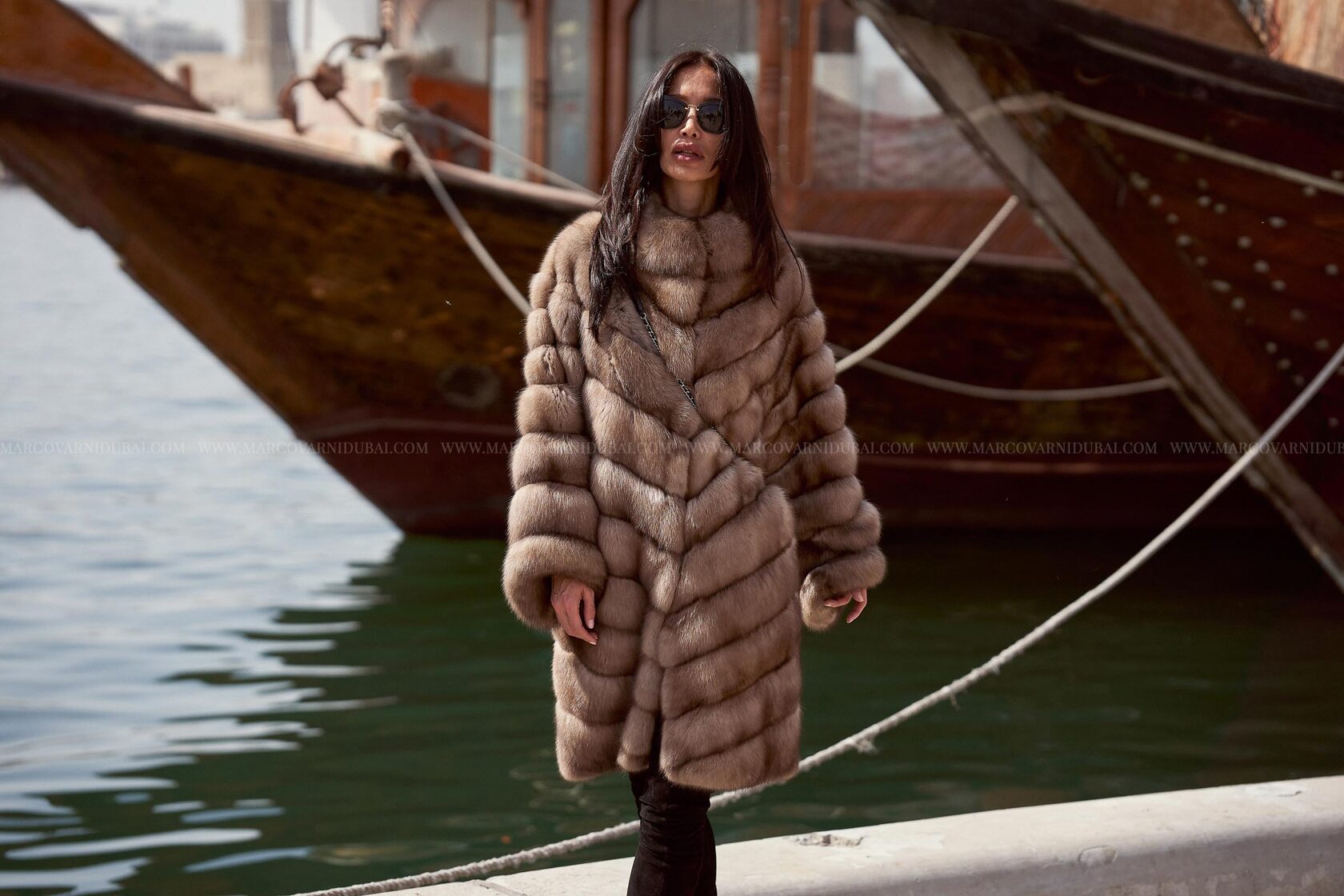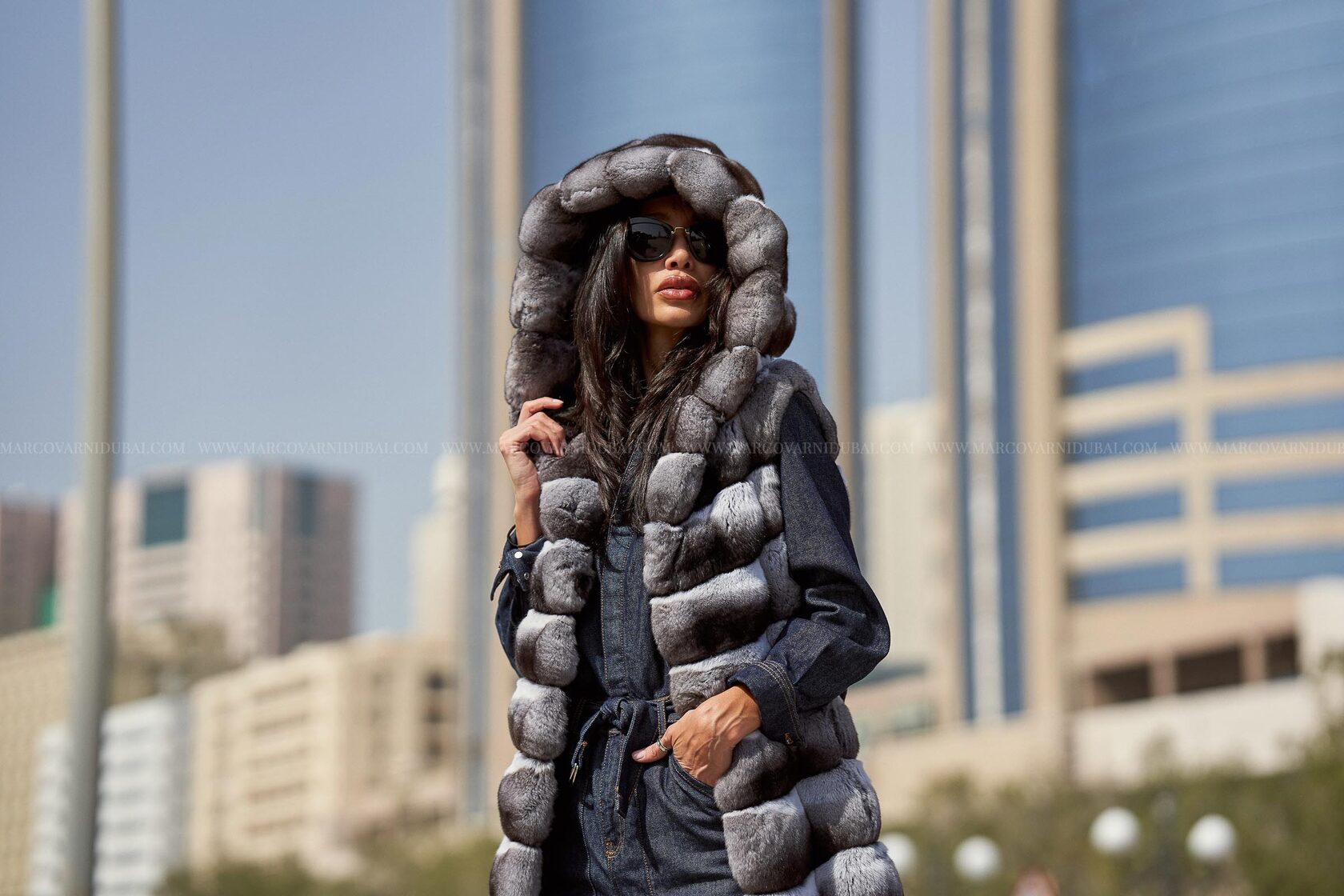Today, I will talk about the criteria for choosing sable, chinchilla, lynx, and karakul fur products among the abundance of offerings on the market, saturated with both high-quality and low-quality goods.
Sable Sable furs have the most extensive sorting gradation. The appearance and cost of sable fur are influenced by: habitat, gender, size, color (more than seven colors), shade or color group, as well as grade and "silver" (presence of gray hairs). Sable is not a large animal; do not confuse it with varieties from America or any other countries where any fur-bearing animal is called a "sable." Sable is soft, fluffy, incredibly beautiful, and durable! Playing in the light with a gray or brown hue, it is always stunningly beautiful! Sable furs have color zoning and hair length: darker on the back, light and smooth transitions on the sides and underfur, which can have different shades depending on the animal's habitat. These factors complicate the process of assembling furs for a garment. Try to assess the quality of your purchase when buying a product made from low-quality foreign raw materials. Determining coloring is simple: spread the fur and press your finger to the leather side; if the skin color doesn't differ from your finger, it means the fur is not dyed or tinted. The strip of fur should not be too wide or "thick." Overripe fur, that is, an improperly caught animal, is also considered a defect! It looks like uncombed hair in the underfur area, although the upper guard hairs appear normal.
Sable Sable furs have the most extensive sorting gradation. The appearance and cost of sable fur are influenced by: habitat, gender, size, color (more than seven colors), shade or color group, as well as grade and "silver" (presence of gray hairs). Sable is not a large animal; do not confuse it with varieties from America or any other countries where any fur-bearing animal is called a "sable." Sable is soft, fluffy, incredibly beautiful, and durable! Playing in the light with a gray or brown hue, it is always stunningly beautiful! Sable furs have color zoning and hair length: darker on the back, light and smooth transitions on the sides and underfur, which can have different shades depending on the animal's habitat. These factors complicate the process of assembling furs for a garment. Try to assess the quality of your purchase when buying a product made from low-quality foreign raw materials. Determining coloring is simple: spread the fur and press your finger to the leather side; if the skin color doesn't differ from your finger, it means the fur is not dyed or tinted. The strip of fur should not be too wide or "thick." Overripe fur, that is, an improperly caught animal, is also considered a defect! It looks like uncombed hair in the underfur area, although the upper guard hairs appear normal.

Chinchilla Products made from chinchilla fur represent the absolute opposite. The non-uniform depth of hair roots illustrates two specific features unique to chinchillas. The Incas recognized the value of chinchilla fur, elevating it to the status of royal attributes. Only the elite from the nobility could wear such clothing. The uniqueness of the chinchilla fur lies in the growth of up to eighty hairs from a single hair follicle, with each hair having a diameter of approximately 5% of human hair.
One of the factors contributing to its high value is the large size of the fur with a beautiful contrast between the dark back and light sides. Auction trading ensures excellent quality and finishing as the basis for the durability of chinchilla fur products. At the Marco Varni factory, we employ special technology and materials to work with this delicate fur. Our coats do not tear, and the fur does not shed.
One of the factors contributing to its high value is the large size of the fur with a beautiful contrast between the dark back and light sides. Auction trading ensures excellent quality and finishing as the basis for the durability of chinchilla fur products. At the Marco Varni factory, we employ special technology and materials to work with this delicate fur. Our coats do not tear, and the fur does not shed.

Lynx For the 'white and fluffy' mood, you will undoubtedly be ready in a lynx fur coat. In lynx fur products, density, white color, and vividly expressed dark randomly placed spots are highly valued. However, the whiteness must be natural and not achieved through various types of bleaching.
Working with lynx fur is the most challenging! The coat should look like a unified canvas after the furrier's work — and nothing else! The production of lynx fur products involves a complex technology of connecting fur pieces lengthwise in the garment. The connection must be invisible — skill and experience with this type of fur are necessary. In a high-quality lynx fur product, the presence of a yellow color is a sign of luxury. Only the white color of the belly is used from the entire fur skin.
Working with lynx fur is the most challenging! The coat should look like a unified canvas after the furrier's work — and nothing else! The production of lynx fur products involves a complex technology of connecting fur pieces lengthwise in the garment. The connection must be invisible — skill and experience with this type of fur are necessary. In a high-quality lynx fur product, the presence of a yellow color is a sign of luxury. Only the white color of the belly is used from the entire fur skin.

Swakara, Karakul Pay attention to the off-season offerings in the fur market. Swakara is derived from the abbreviation South-West Africa KARAkul — it is South African karakul. Karakul is the name for the skins from the karakul breed of sheep.
It can be distinguished by the unique flat-ridged type of curl, resembling the pattern of desert sand. Straight curved rows replace each other, captivating the gaze with the infinite labyrinth. To create a uniform type of curl across the entire surface of the product, the manufacturer conducts complex selective breeding work.
They are categorized by colors such as black, white, white with black spots, brown, and gray. The cost varies depending on fashion trends. Interestingly, the trend for colored furs has equalized the cost of black and white colors.
When determining the cost, factors such as the size and weight of the skins, hair structure, curl development, shine, hair length, and quality are taken into account. Everyone will enjoy admiring the intricate patterns — that's the entire secret of success and longevity of the swakara image.
It can be distinguished by the unique flat-ridged type of curl, resembling the pattern of desert sand. Straight curved rows replace each other, captivating the gaze with the infinite labyrinth. To create a uniform type of curl across the entire surface of the product, the manufacturer conducts complex selective breeding work.
They are categorized by colors such as black, white, white with black spots, brown, and gray. The cost varies depending on fashion trends. Interestingly, the trend for colored furs has equalized the cost of black and white colors.
When determining the cost, factors such as the size and weight of the skins, hair structure, curl development, shine, hair length, and quality are taken into account. Everyone will enjoy admiring the intricate patterns — that's the entire secret of success and longevity of the swakara image.

When choosing any of the described fur types, you must be confident in your seller. You should be sure that they are a professional in their field. If so, they will undoubtedly inform and show you what you are acquiring.
